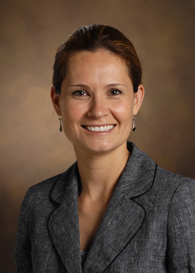
Sabina Gesell, Ph.D.
Activity helps Latino children develop a more accurate perception of their weight
A new study by researchers at the Monroe Carell Jr. Children's Hospital at Vanderbilt suggests that increasing physical activity helps Latino children develop a more accurate self-perception of weight.
Sabina Gesell, Ph.D., a research assistant professor in the Department of Pediatrics, is the first author, and Shari Barkin, M.D., director of General Pediatrics, is the principal investigator of the study, published online in Clinical Pediatrics.
Their research showed that increasing Latino children’s activity level could double the proportion of children who recognize they are dangerously overweight. Obesity is a major problem for Latino families in the United States, with 27 percent of Latino children having a body mass index (BMI) above the 95th percentile.
“Previous studies show both adults and children in the Latino population often underestimate their own body size, and can fail to see a link between obesity and poor health,” Gesell said.
“We theorized that improving accuracy of self-perception of body size could motivate children to make healthy behavior changes which would result in change in their BMI.”
Previous studies among other populations suggest there is a strong link between weight loss efforts and self-perception of body size.
Gesell and Barkin examined 61 children whose family or pediatric physician had determined they were overweight. The children were asked to look at a series of seven drawings representing children of different body sizes: underweight, normal weight and over weight.
At the beginning of the study only 21 percent of the children correctly selected the overweight drawings as representing them. Nearly 80 percent selected a drawing of a normal weight child, although all participants were clinically overweight.
“This may be because being overweight is so common among Latino children that it is normalized. They become blind to it,” Gesell said. “Also, there is a strong cultural tendency for parents to prefer heavier children. They are seen as cherubic. Their weight is evidence that the parents have the resources to provide for their children.”
For six months, a randomized sub-group of children were enrolled in a culturally meaningful, community-based exercise program. Once a month they participated in hourlong skill-building sessions at a local recreation center, including 30 minutes of activities like soccer or dance. The children were also trained to assess how hard they were exercising by taking their own pulse, or becoming aware of when they were sweating.
After the six months was up, the children were asked again to indentify which body-size sketch best described them. While the non-activity control group remained the same, with a 20 percent accuracy rate, the intervention group doubled their accuracy. Forty percent of the children correctly identified themselves as being overweight.
Gesell said in the United States there is concern about mass media causing children to have inappropriate worry about their size when they are not overweight. She said seeing the flip side of that coin is important, too.
“We would like for the Latino population to be motivated by long-term better health. If families come here for a better life, we need to teach the message that obesity is counterproductive to the American Dream,” Gesell said.













